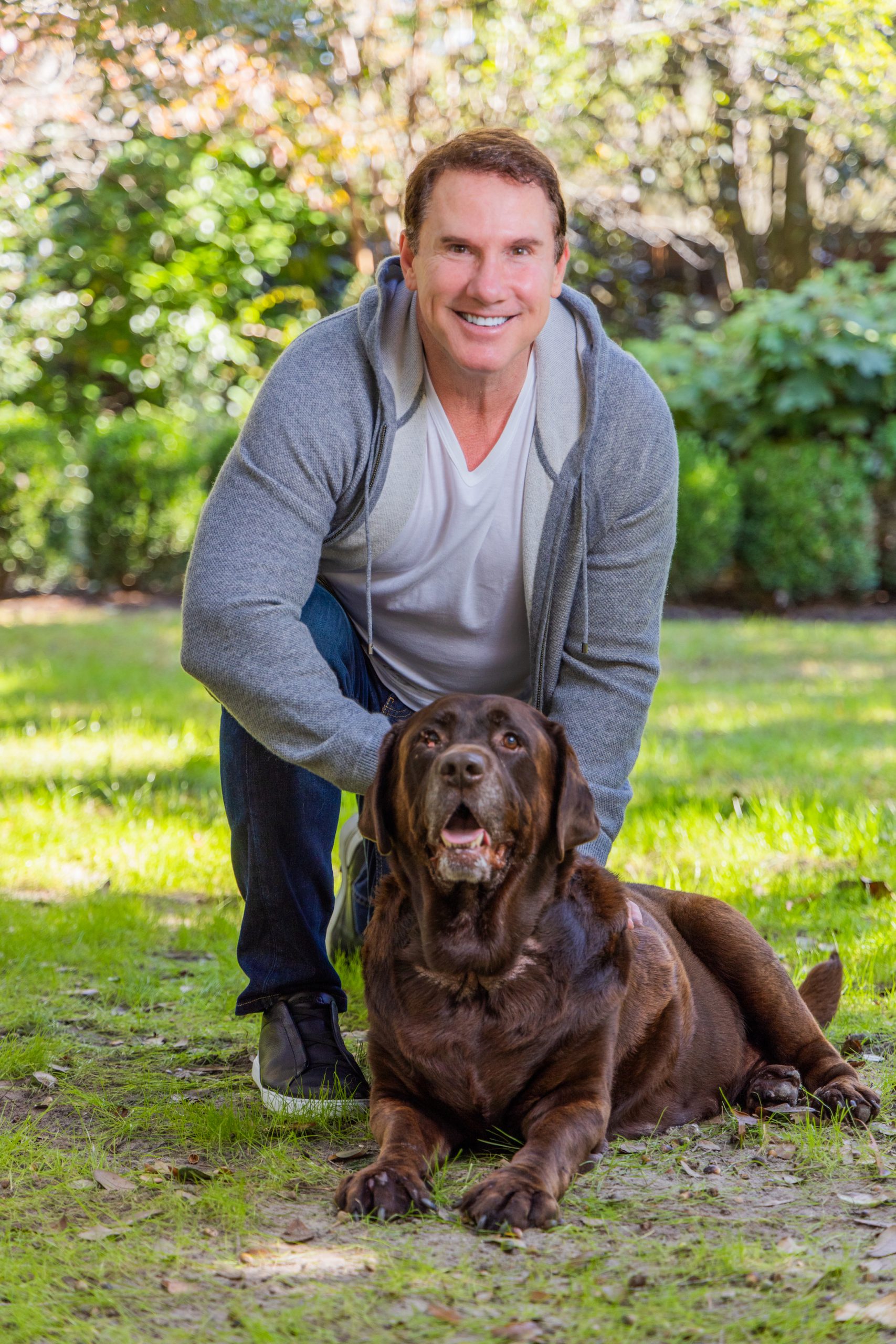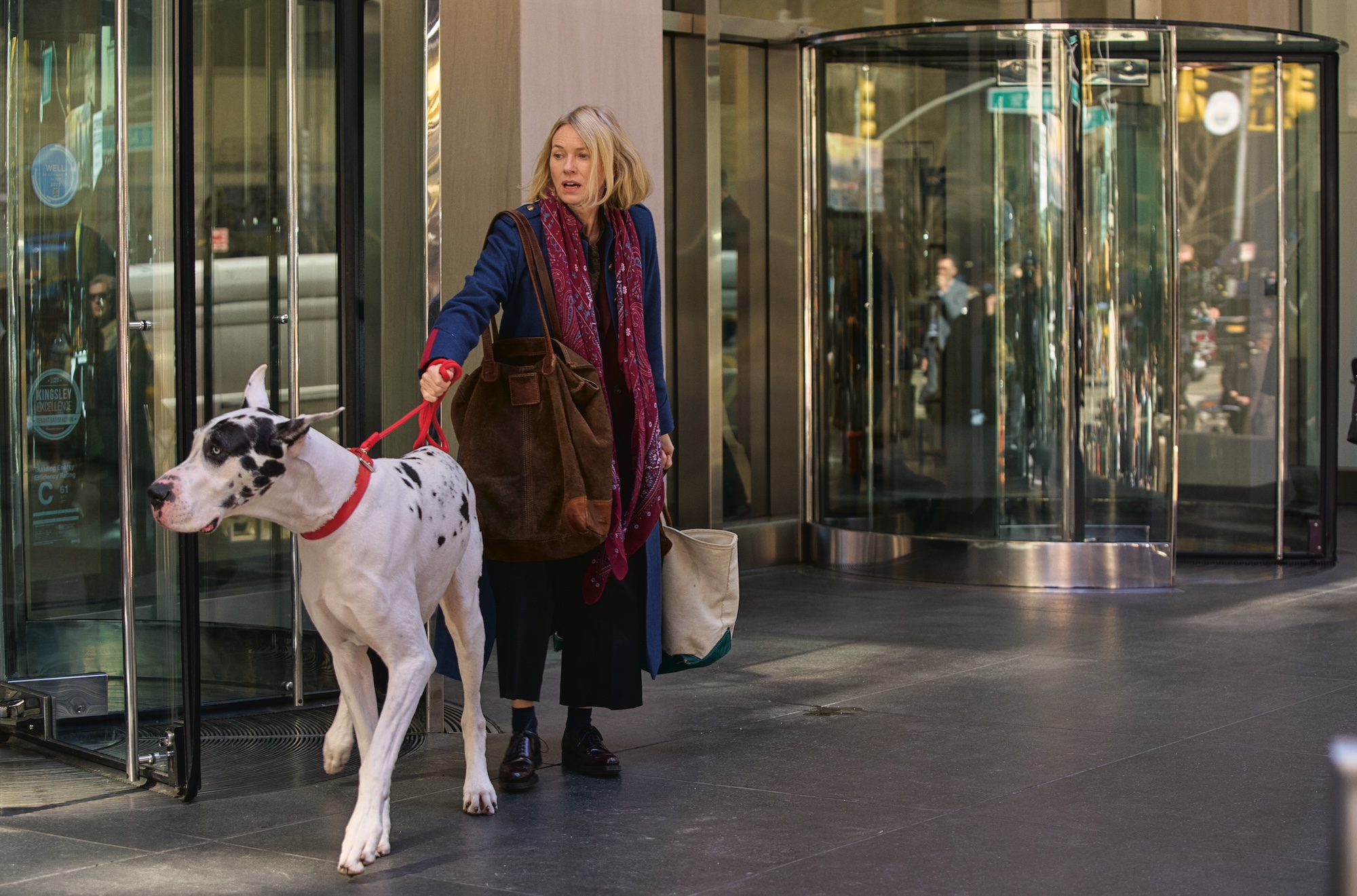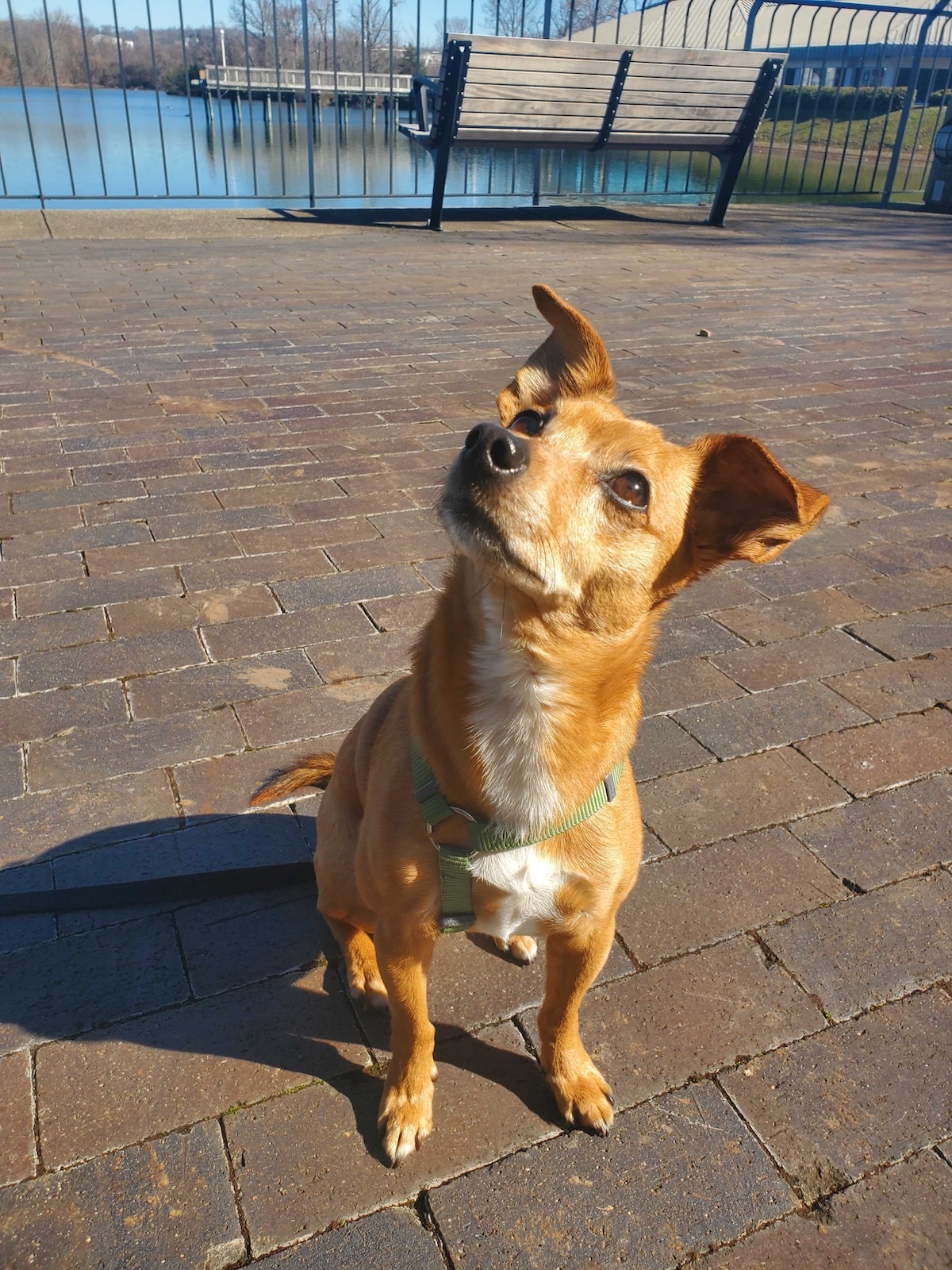Nicholas Sparks has plumbed the depths of human love across nearly three decades and 24 published novels. In three of those books (his latest, Counting Miracles, included) he added a simpler, though no less deep, kind of love: that of a dog.
There has been no shortage of inspiration for canine characters and their storylines in the author’s life. Sparks is a well-known dog lover and tells us he’s raised over a dozen in his lifetime, the first being a Doberman pinscher named Brandy that his family adopted when he was 8. If the old adage “write what you know” is true, Sparks has certainly put in the work when it comes to pups, their lives, and our lives alongside them.
In Counting Miracles, published by Penguin Random House and out September 24, Tanner, a man with few ties other than his work in the Army Rangers, arrives in Asheboro, North Carolina looking for a father he’s never met. Instead, he encounters Kaitlyn, an intriguing single mother and doctor. Meanwhile, Jasper, an octogenarian with a mysteriously tragic past and a loyal dog named Arlo, becomes fascinated by the elusive white deer on the preserve that backs up to his remote property. Arlo is like every dog you’ve ever known and also absolutely himself. This easy expansiveness and specificity—with a character who has no dialogue, no less—is just one of the reasons why a Nicholas Sparks tale is always worth picking up at your local bookstore.
We spoke to Sparks about how a dog can impact the stories Sparks publishes as well as the life of a writer.
Digest: If you can pinpoint it, where did your love for dogs come from?

Nicholas Sparks: To me, this is a question that is akin to asking, When did you realize that you liked opening presents on Christmas morning? I’ve loved dogs for as long as I can remember, beginning with Pepper, a sweet, good-natured mutt my parents brought home in the hopes of distracting my siblings and I long enough to allow our mom the time she needed to do a load of laundry or get dinner started. As Irish triplets—we were all born in December for three consecutive years—my mom needed all the help she could get.
Still, if I had to choose one dog as the inspiration for all the rest, I’d have to go with Brandy, a Doberman pinscher. Brandy joined our family when I was eight, and she remained part of the family until my second year of college. Those 12 years were formative for me: Brandy arrived when I was a child, and years later, with her muzzle nearly white by then, she would lay on the floor beneath my feet while I wrote my first (albeit unpublished) novel.
It is difficult for me to remember those years without conjuring up her image. When I rode my bike, she trotted alongside me; when my family made the 10-hour drive to San Diego—where we’d stay with our grandmother for a week or so—Brandy would lay beside my siblings and I in the back of our Volkswagen van, watching as we read one comic book after the next. I recall bringing Brandy to the American River, where we’d hike along the bluffs for hours, and I can distinctly recall the way she terrified the mailman whenever he stepped up to the front porch to drop off letters or packages. Some of my friends were occasionally nervous around her—her stare could be intimidating—but to us, she was sweet and loyal and goofy, the best kind of dog a kid could ever have.
You once wrote, “My dogs are there to teach me to take a break. They’re there to remind me that there’s more to life than work.” What does that look like in practice with Gus, your German shepherd? How do they fit into your process?
N.S.: When I’m at home (which is, frankly, most of the time), Gus remains at my side. If I’m writing and need a glass of water, Gus will rise and walk with me to the kitchen, wait while I fill the glass, then follow me back to the office and lay down again. If the phone rings, he walks with me to the phone and watches me while I talk. If I head to the bathroom, he trails behind me and waits outside the door. In the evenings, if I adjust myself to a more comfortable position in the recliner, Gus hears the sound and will immediately approach me, his interest suddenly piqued. My impression of what Gus might be thinking in those moments goes something like this: “I heard you move, which means you’re going somewhere, right? What do you need me to do?” It’s humorous and flattering and sometimes exasperating; I’ve had many German Shepherds in the past, but Gus is far and away the most intense with his desire to do something…anything… whenever I so much as flinch.
Still, that intensity serves as a constant reminder that Gus is a working dog. He is happiest when he’s busy, so any break I take during the day usually involves him, whether that means going for a walk or playing fetch in the yard.
What do you think dogs can bring to a work of fiction?
N.S.: Dogs teach us the meaning of unconditional love and unconditional acceptance. Dogs don’t care whether you’ve had a good day or bad day; they see the best version of you, despite your flaws, and it’s the reason I can’t imagine my own life without a dog by my side.
I’m not alone in thinking that way, of course. There is something special and unique about the human-canine bond—and a universal understanding of what that means—and authors from Jack London (Call of the Wild) to Stephen King (Cujo) have included dogs as central characters in their novels in an exploration of that idea. I, too, have included dogs in three of my novels—The Guardian, The Lucky One and Counting Miracles—and in each case, the dog is no less important than the other human characters. Dogs as characters can enhance both the originality and universality of the story.
How is the approach to writing your canine characters similar to writing your human characters?
N.S.: I don’t write from the canine perspective; instead, I write from the perspective of a dog lover, who happens to own a dog. Even so, the approach to creating a “human character” and a “dog character” is roughly the same, and a full explanation of how I do that might take me a hundred pages to fully explain. Briefly, however, I think it’s important to strike a balance between uniqueness and universality. For instance, dogs love treats (a universal truth), but Arlo in Counting Miracles) noses at Jasper’s pockets when he’s carrying [treats] (a behavior unique to Arlo). That behavior—because it’s both universal and unique—makes Arlo more believable and real to the reader.
Do you have to do any additional research when writing the dogs in your stories, or are their personalities and gestures pulled from dogs you know?
N.S.: I’ve been fortunate in that I’ve owned more than a dozen dogs in my life, all with different personalities, and whenever I create a “dog character” I have plenty of memories and experiences to draw on. Arlo, in Counting Miracles, for instance, was inspired by my son Landon’s dog Moose, who spends his days with me while Landon is at work.
Jasper is a burn victim, and almost everyone in the novel has a reaction to Jasper’s appearance except for Arlo. What inspired Arlo specifically, and what inspired Arlo and Jasper’s relationship?
N.S.: The original inspiration for the story came to me in a flash: I imagined an old man, injured in the forest, with a dog standing over him. I didn’t know how the old man had been injured or what had happened to him—nor did I know whether the dog was his—but the image was vivid enough for me to further explore the idea. In time, further ideas were added, and little by little, a story began to form in my mind. The end result was Counting Miracles.
Arlo has many talents. He’s a loyal companion. He can put away a treat. He’s heroic when he needs to be. But he’s a failed mushroom hunter. Have you trained any of your dogs to do anything special? Or, is there something they do naturally that you really admire?
N.S.: Years ago, I had a Jack Russell terrier named Skippy who was a savant when it came to learning tricks. I suppose the neatest thing I taught him to do was to ride with me on the board while I was surfing.
Has a dog ever surprised you like Arlo surprised Jasper?
N.S.: Yes. Years ago, I had a dog named Jack who–just like Arlo–suddenly appeared at my doorstep, shaking and shivering, in a thunderstorm. Like Jasper, I went to veterinarians and hung posters, trying to locate the owner, but no one ever came forward, so I ended up adopting him. Jack was sweet but notoriously stubborn, and in all the years I owned him, I could never break him of his wandering ways. Every morning, Jack would leave the yard—ignoring my calls to come—and vanish, only to suddenly reappear hours later. I had no idea where he went or what he did. He would sneak through the neighbor’s property if he suspected I was following him or even hide, and eventually, I tired of even trying to stop him. Instead, I’d joke with the kids, telling them that “Jack is on his walk-about.”
Again, this went on daily for years, and after Jack passed away, I went for a walk in the neighborhood, only to have three or four people at different houses step outside to ask me about Jack, since they hadn’t seen him lately. When I asked how they knew him, each of them told me essentially the same story. “He’d come by at eight every morning, and I’d give him a treat, and he’d sit with me until my son was picked up by the school bus,” or “Jack came by every day at nine and I’d give him a treat, and he’d sit with me while I worked in the garden.” Jack, I realized, had made his own circle of friends, and like Arlo, he obviously loved his treats.







